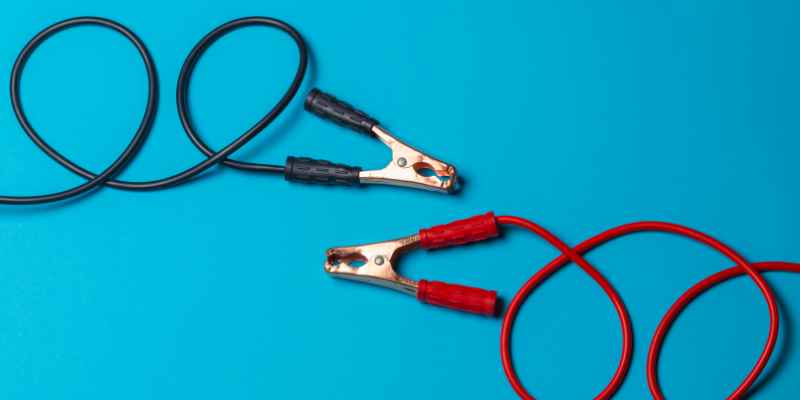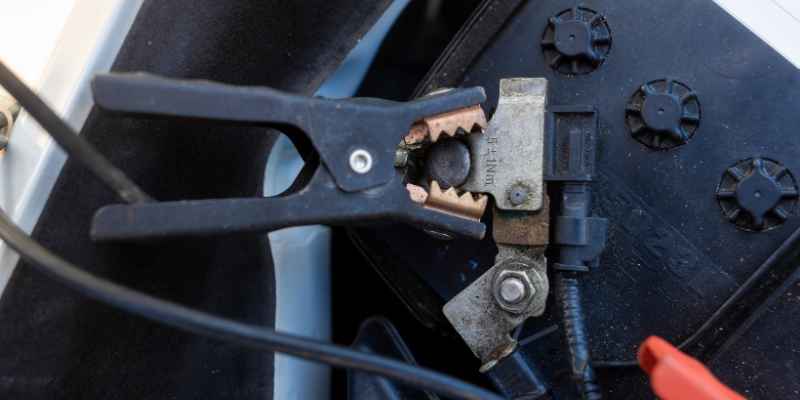Connecting a Battery Tender is a simple process that involves attaching the positive and negative terminals of the tender to the corresponding terminals on the battery. Battery Tenders provide a smart charging solution for maintaining the health and longevity of your battery, making them an essential tool for vehicle owners and enthusiasts.
By connecting the Battery Tender correctly, you can ensure a reliable and efficient charging experience, allowing your battery to stay charged and ready to use whenever needed.
The Importance Of Power Preservation
Preserving power is crucial for the longevity of your battery. Connecting a battery tender can help maintain and charge the battery, ensuring it is always ready for use. Proper preservation ensures optimal performance and extends the lifespan of the battery.
The Importance of Power Preservation
Benefits of Battery Maintenance
Battery tender connection is crucial for preserving power in your battery. Regular maintenance can extend battery life and ensure optimal performance. It also prevents issues like a dead battery when you need your vehicle the most.
Cost Savings and Longevity
Proper battery maintenance saves you money by avoiding premature replacements. Investing in a battery tender can significantly extend the life of your battery. It’s a cost-effective way to ensure your battery remains in top condition.
Charging your battery correctly and consistently can double or even triple its lifespan. Proper maintenance also prevents corrosion and sulfation, common factors that shorten battery life. By utilizing a battery tender, you can save on costly replacements in the long run.
Here are some key reasons why keeping your battery maintained is essential:
1. Prevents sudden battery failure
2. Cost-effective solution for battery longevity
3. Maximizes battery performance
4. Avoids unnecessary replacements
In summary, regularly connecting your battery to a tender is vital for preserving its power and ensuring it remains in top condition.

Understanding Battery Tenders
If you own a vehicle that isn’t used regularly, such as a motorcycle, classic car, or boat, you may have encountered the issue of a dead battery. This can be a frustrating problem to deal with, especially when you’re ready to hit the road or set sail. Luckily, there is a simple solution to keep your battery charged and ready for use: a battery tender. In this blog post, we will explore what a battery tender is, how it works, and why it is a valuable tool for maintaining your vehicle’s battery life.
What Is A Battery Tender?
A battery tender is a device designed to maintain the charge of a battery over an extended period. It is commonly used to keep the batteries of vehicles with infrequent usage, such as motorcycles, ATVs, snowmobiles, and boats, in optimal condition. Unlike a regular battery charger, which may continuously supply power and risk overcharging the battery, a battery tender is specifically designed to deliver a low, constant charge to prevent damage and extend the battery’s lifespan.
How Battery Tenders Work
Battery tenders work by utilizing a process called floating voltage or “float charging.” When connected, the tender monitors the battery’s voltage and adjusts the charging current accordingly. This prevents overcharging and provides a trickle charge to compensate for any self-discharge that may occur over time. The tender automatically switches between charging and maintenance modes, ensuring that the battery remains fully charged without being overworked.
Battery tenders are typically connected to the battery through a set of alligator clips or a ring terminal harness that attaches directly to the battery’s terminals. Some advanced models may also include additional features such as diagnostic capabilities or built-in protection against short circuits and reverse polarity. These features make battery tenders safe and user-friendly for individuals of all experience levels.
By utilizing a battery tender, you can avoid the hassle and inconvenience of dealing with a dead battery. It not only saves you time and money but also ensures that your vehicle is always ready for action. Whether you’re a seasonal vehicle enthusiast or someone who simply wants to extend their battery’s lifespan, a battery tender is a must-have accessory that will keep your battery in top shape.
Choosing The Right Battery Tender
When it comes to choosing the right battery tender, it’s essential to consider the specific needs of your vehicle or equipment. Selecting the appropriate battery tender will not only ensure a longer battery life but also prevent overcharging, which can damage the battery. Here are some key factors to consider when choosing the right battery tender:
Type Of Batteries Supported
Battery tenders are designed to work with various types of batteries. Being aware of the type of batteries supported by a particular battery tender is crucial to make sure it is compatible with your vehicle’s battery. Some battery tenders might support lead-acid, AGM, or lithium-ion batteries, so check the specifications to find the most suitable option for your needs.
Features To Consider
- Automatic charging: Look for a battery tender with automatic charging capabilities to prevent overcharging.
- Multi-stage charging: Opt for a tender that offers multi-stage charging to ensure efficient and safe charging for your battery.
- Weatherproof design: If you intend to use the battery tender in outdoor or harsh environments, consider one with a weatherproof design for durability.
- Smart technology: Battery tenders with smart technology can adjust the charging process based on the battery’s condition, providing optimal charging performance.
Connecting The Battery Tender
Connecting the Battery Tender is an essential step to maintain the health and longevity of your vehicle’s battery. Properly connecting the Battery Tender ensures that your battery remains charged and ready for action when you need it. Let’s explore the step-by-step process of connecting the Battery Tender to your vehicle’s battery.
Preparing The Battery
Before connecting the Battery Tender, it’s crucial to prepare the battery for the process. Make sure the battery terminals are clean and free from any corrosion. If there’s corrosion present, use a battery terminal cleaner to remove it before proceeding with the connection.
Step-by-step Connection
Follow the below steps to connect the Battery Tender to your vehicle’s battery:
- Identify the positive (+) and negative (-) terminals on the battery.
- 1. Unplug the Battery Tender from the power outlet before proceeding.
- Attach the red positive (+) clamp of the Battery Tender to the positive (+) terminal of the battery.
- Connect the black negative (-) clamp to the negative (-) terminal of the battery.
- Plug the Battery Tender into an electrical outlet.
Once you have completed these steps, the Battery Tender is successfully connected to your vehicle’s battery, ensuring it remains charged and ready for use. Regularly checking the connection and the battery’s overall condition is crucial for long-term battery health and optimal vehicle performance.
Safety Precautions And Best Practices
When it comes to connecting a battery tender, safety should always be your top priority. Following these best practices can help ensure a trouble-free and safe experience.
Proper Ventilation
Before you begin connecting your battery tender, ensure that you are working in a well-ventilated area. Proper airflow is important to prevent the accumulation of potentially harmful gases that may be released during the charging process. This will help maintain a safe environment for both yourself and your equipment.
Avoiding Overcharging
Overcharging can seriously damage your battery, reducing its overall lifespan and performance. To avoid this, it is crucial to pay attention to the recommended charging times provided by the manufacturer of your battery tender. Be sure to follow the instructions closely and set a timer if necessary. This simple precaution will help prevent overcharging and keep your battery in optimal condition.
Safe Connection And Disconnection
When connecting and disconnecting your battery tender, always follow the appropriate steps provided in the user manual. This will ensure a secure and stable connection. Additionally, remember to wear protective gloves and eyewear while handling the battery. This will protect you from any potential acid leaks, sparks, or accidental contact with battery terminals.
Regular Inspection
It’s important to periodically inspect your battery tender for any signs of damage or wear. This includes checking the cables, connectors, and housing for any cracks, frays, or corrosion. If you notice any issues, it’s best to replace the damaged parts promptly to prevent any safety hazards or disruptions to your charging process.
Storing The Battery Tender
When you are not using your battery tender, it’s essential to store it in a safe and dry location. Keep it away from any sources of excessive heat or open flames to avoid the risk of fire. Additionally, store the battery tender in a place where it won’t be easily knocked over or subjected to any physical damage. This will help prolong its lifespan and ensure its continued functionality when you need it.
Conclusion
Following these safety precautions and best practices will help you connect your battery tender safely and effectively. By adhering to these guidelines, you can enjoy seamless charging and maintain the longevity of your battery for years to come.
Monitoring And Maintenance
Monitoring and Maintenance play a crucial role in ensuring the longevity and performance of your Battery Tender. Regular Checks and timely Troubleshooting are essential to keep your charging system running smoothly.
Regular Checks
- Inspect the connection – Ensure the Battery Tender is securely connected to the battery.
- Check the indicator lights – Verify that the LED lights are functioning properly as per the manufacturer’s instructions.
- Monitor the charging process – Regularly check the charging status to ensure the battery is being charged effectively.
- Test the battery voltage – Use a multimeter to measure the voltage to ensure it is within the recommended range.
Troubleshooting Common Issues
- Indicator lights not working – Check the connections and replace any faulty components if needed.
- Slow charging – Inspect the battery and connections for any damage that may be hindering the charging process.
- Battery Tender not turning on – Ensure the power source is working and the connections are secure.
Benefits Of Regular Battery Maintenance
Regular maintenance of your battery tender provides numerous benefits, ensuring the longevity and optimal performance of your vehicle’s battery. By taking proactive steps to care for your battery, you can prevent common issues and keep it in top working condition.
Preventing Sulfation
Sulfation occurs when lead sulfate crystals build upon the battery plates, reducing its ability to hold a charge. Regular maintenance through a battery tender helps dissolve these crystals, preventing this damaging process.
Ensuring Readiness
One of the key benefits of regular battery maintenance is ensuring that your battery is always charged and ready for use. Keeping your battery tender connected on a regular basis prevents discharge and maintains optimal readiness.

Frequently Asked Questions For Connecting Battery Tender
How Do I Connect A Battery Tender To A Motorcycle?
To connect a Battery Tender to a motorcycle, start by locating the battery and selecting a suitable connection point for the charger. Next, connect the red positive clamp to the positive terminal and the black negative clamp to the negative terminal.
Ensure a secure connection for optimal charging.
Can I Leave A Battery Tender Connected All The Time?
Yes, it is safe to leave a Battery Tender connected to your battery for extended periods. The tender will automatically switch to a maintenance mode once the battery is fully charged, preventing overcharging. This constant maintenance ensures your battery remains in optimal condition for immediate use.
What Is The Purpose Of A Battery Tender?
A Battery Tender is designed to maintain the charge of a battery, preventing it from discharging during periods of inactivity. It uses a process called float charging to keep the battery at an optimum level without overcharging, ensuring it is always ready for use when needed.
Is It Necessary To Disconnect The Battery Before Using A Battery Tender?
It’s not necessary to disconnect the battery before using a Battery Tender. The tender can be safely connected directly to the battery, and it will go into a maintenance mode once the battery reaches a full charge, preventing any risk of overcharging or damage to the battery.
Conclusion
Connecting a battery tender is a crucial step in maintaining the longevity and performance of your battery. By following the simple steps outlined in this blog post, you can ensure that your battery remains charged and ready to go whenever you need it.
Remember to always prioritize safety and refer to the manufacturer’s instructions for your specific battery tender model. With a properly connected battery tender, you can enjoy peace of mind knowing that your battery is in good hands.


